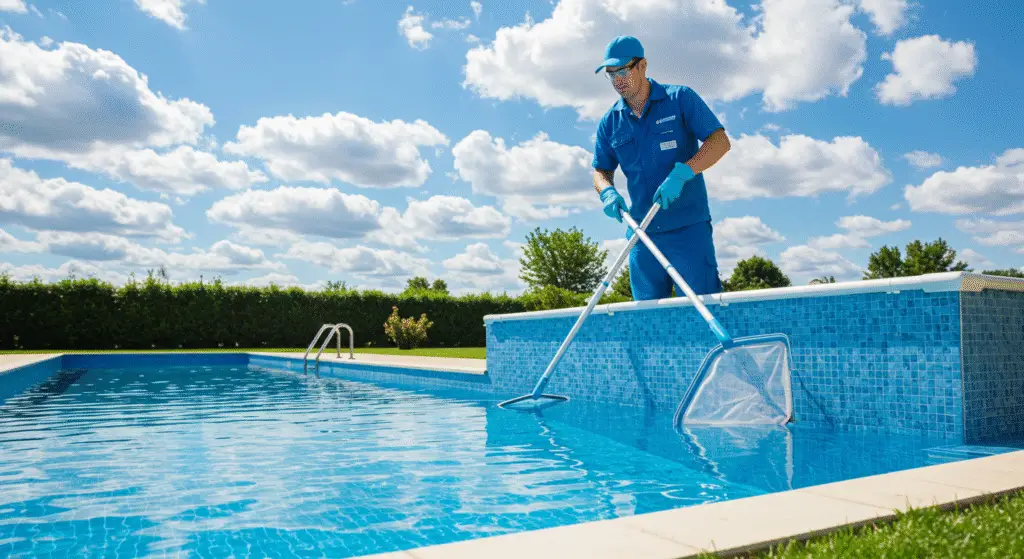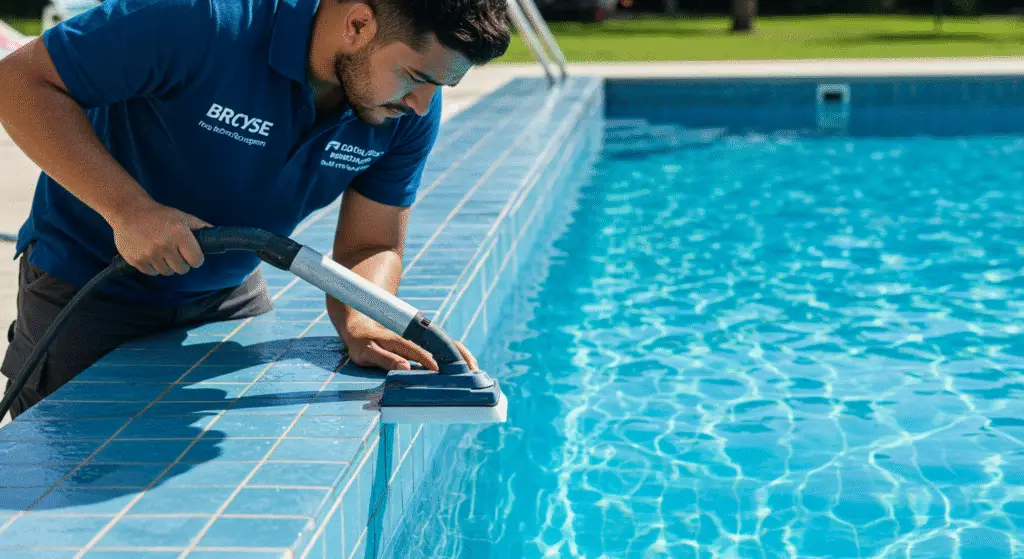
Thinking of adding a pool to your backyard? It’s an exciting idea, but one question that should be at the top of your list is the cost of keeping it clean, safe, and running efficiently. Pool upkeep cost is often overlooked in the excitement of pool ownership, but it plays a major role in the overall investment.
Before you take the plunge, it’s important to understand how much it really costs to maintain a pool and what factors can affect that cost over time.
What You Should Know About the Cost of Pool Maintenance
Once your pool is built and filled, the ongoing expenses begin. The cost of maintenance includes more than just keeping the water clean. It also involves equipment checks, seasonal preparation, energy use, and water management. On average, homeowners spend between one to two thousand dollars per year on general upkeep.
This cost covers chemicals, filters, electricity, and the occasional repair or equipment replacement. If you hire a professional pool service, that adds to the monthly total, but it can also reduce the risk of long-term damage caused by poor maintenance.
Monthly Maintenance and Typical Expenses
Every month, a few regular tasks are necessary to keep your pool healthy and enjoyable. You’ll need to check the water chemistry, run the filter system, clean the pool walls and floor, and ensure your pump is working properly.
Expenses can vary depending on your location, the size and type of your pool, and how much you handle on your own. Chlorine and balancing chemicals might cost a few dozen dollars each month. If you hire a cleaning service, that adds a larger cost but saves time and effort.
Electricity also plays a role, especially if you use a pool heater or keep your pump running several hours each day. In warmer areas, you may run the system for longer periods, especially during peak swimming season.
Seasonal Maintenance Considerations
Some maintenance costs only show up at certain times of the year. For example, opening your pool in the spring after winter can involve equipment checks, chemical balancing, and cleaning. Winterizing your pool before cold weather hits may include covering, draining, and adding special chemicals to protect against freezing damage.
If you live in an area with seasonal temperature changes, it’s essential to budget for both opening and closing your pool each year. These seasonal tasks can sometimes lead to unexpected repairs, especially if the pool or its components weren’t properly maintained during the off-season.
What Can Affect the Cost of Upkeep
There are several factors that influence how much it will cost you to maintain your pool over time.
The type of pool makes a difference. Saltwater pools usually cost less in chemicals but require more expensive equipment maintenance. Traditional chlorine pools need more frequent chemical adjustments.
The size of your pool naturally impacts the amount of chemicals, electricity, and time it takes to maintain it. A larger pool means more water to treat, clean, and heat.
Where you live also matters. In warmer climates where the pool is used year-round, maintenance costs are spread out but continuous. In colder areas, you may face additional costs for winterizing and restarting the pool each season.
If your pool is used often, especially by kids or groups of people, you’ll likely need to clean and balance it more frequently. More use usually means faster buildup of oils, sunscreen, and debris, which means higher chemical and filter usage.
DIY or Professional Help?
Some pool owners prefer to take care of maintenance themselves to save money. If you’re comfortable with testing water chemistry, cleaning the pool, and managing basic repairs, this approach can be effective.
However, hiring a professional pool service ensures everything is done correctly and consistently. While it does increase your monthly expense, it also lowers the risk of long-term damage due to neglect or errors. If you’re often busy or unfamiliar with pool systems, this might be the smarter choice.
Many pool owners find a balance by doing basic tasks themselves and scheduling professional help a few times a year.
Long-Term Considerations for Pool Owners
Beyond the monthly and seasonal tasks, pool upkeep involves long-term investments. Over time, equipment like pumps, filters, and heaters will wear out. Surfaces may need to be resurfaced or repaired, and liners in vinyl pools eventually need replacing.
Planning for these larger costs is an important part of responsible pool ownership. Even if your pool is new, setting aside a small amount each year for future repairs can help avoid financial stress later.
Newer technology can also offer savings in the long run. Energy-efficient pumps and heaters, automatic pool covers, and smart systems that monitor water levels and chemical balance can reduce day-to-day maintenance costs over time.

Tips to Keep Costs Manageable
While some pool costs are unavoidable, there are ways to reduce them without compromising the quality of your water or the safety of your pool.
Using a high-quality cover can reduce evaporation, keep debris out, and protect your pool during the off-season. It also helps maintain water temperature, which can save on heating costs.
Running your pump during off-peak hours and using energy-efficient models can significantly cut down on electricity usage. Regularly cleaning your filters and checking water balance also helps extend the life of your equipment.
Learning basic pool chemistry and maintenance techniques can also help. Even if you rely on a professional for larger tasks, handling routine checks on your own can save money.
Final Thoughts on Pool Ownership and Maintenance Costs
Owning a pool is a rewarding experience, especially during hot summers or family gatherings. But it’s important to be realistic about the cost involved. Understanding the full picture of pool upkeep helps avoid surprises and ensures you’re fully prepared for the responsibilities of ownership.
By planning ahead, making smart choices, and keeping up with regular maintenance, you can enjoy your pool without letting the costs get out of hand.
